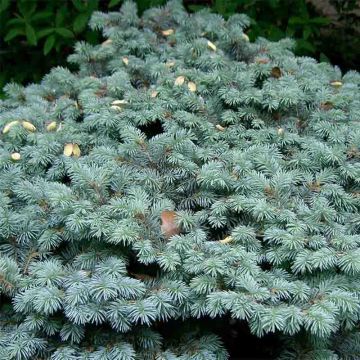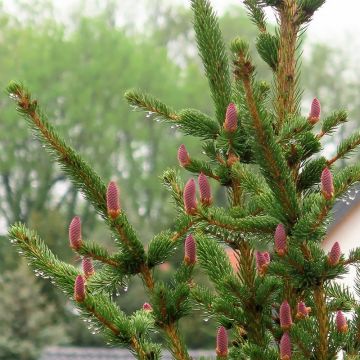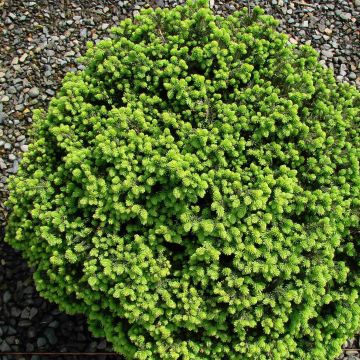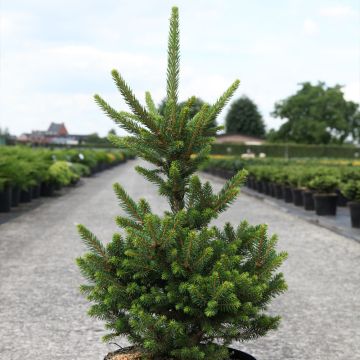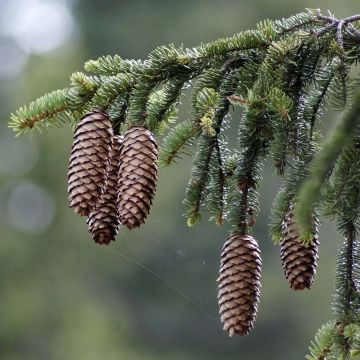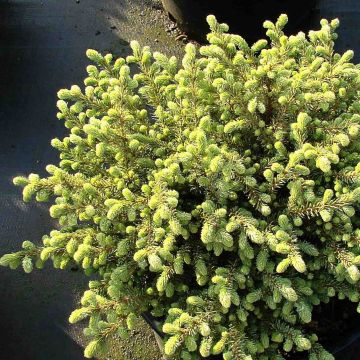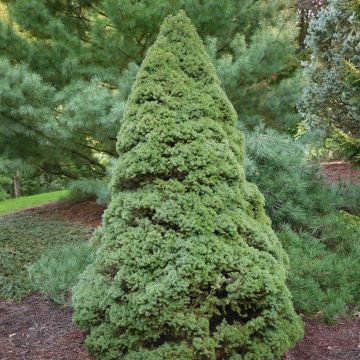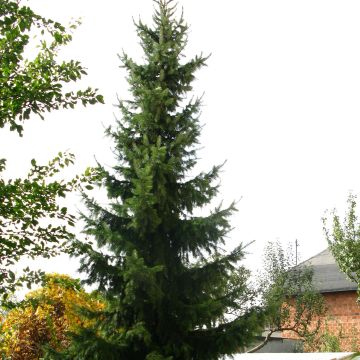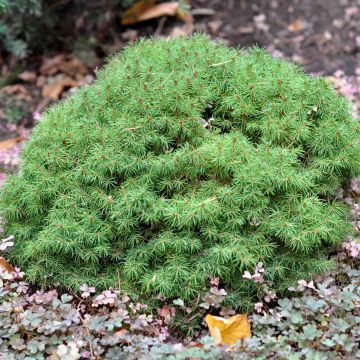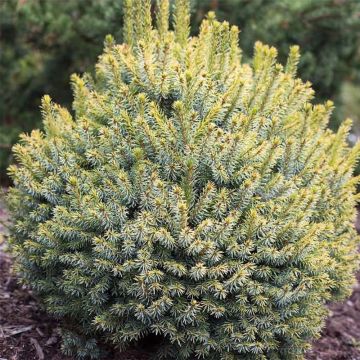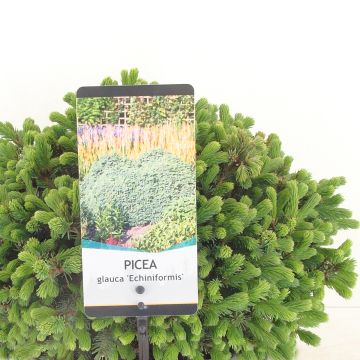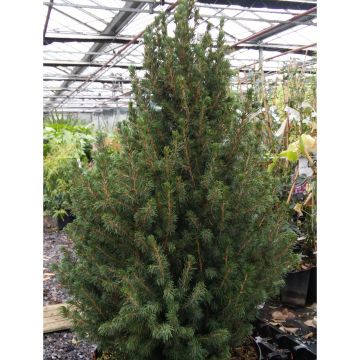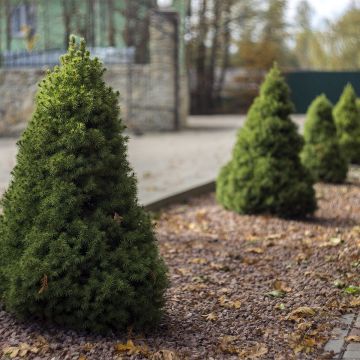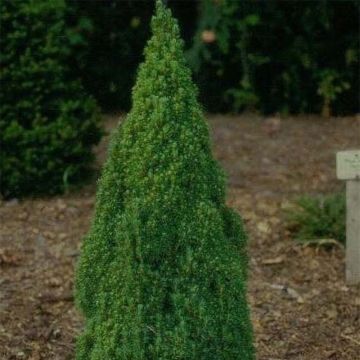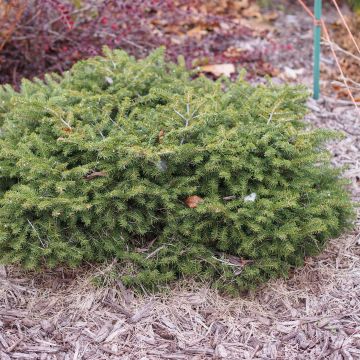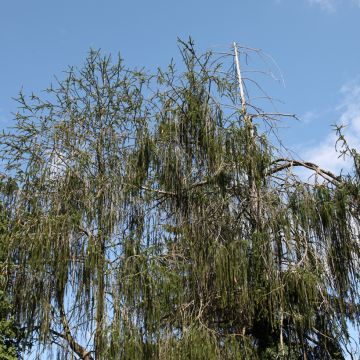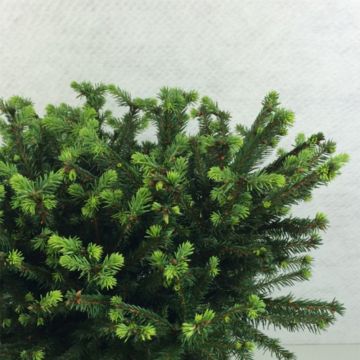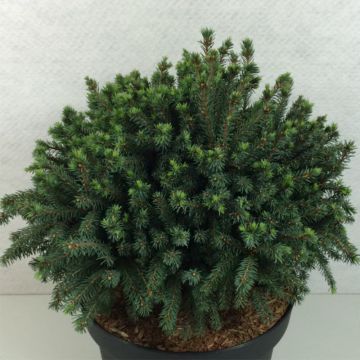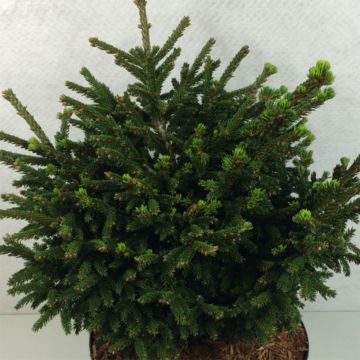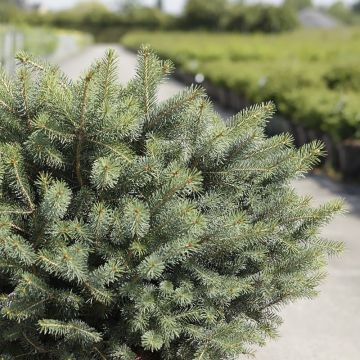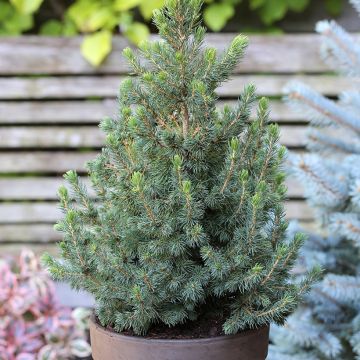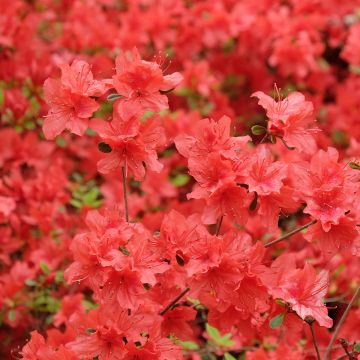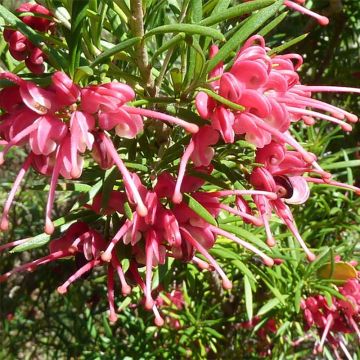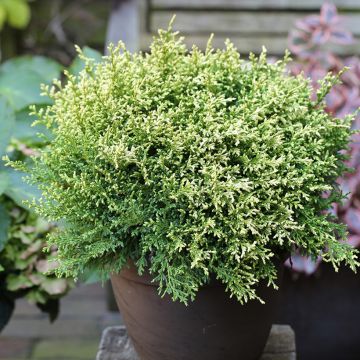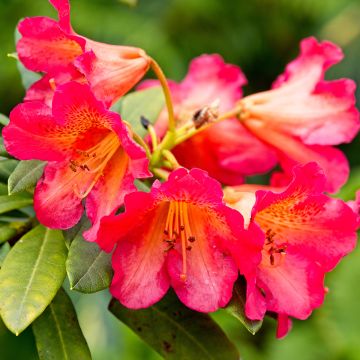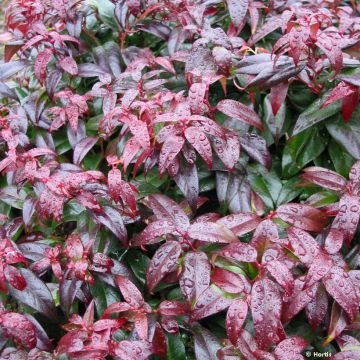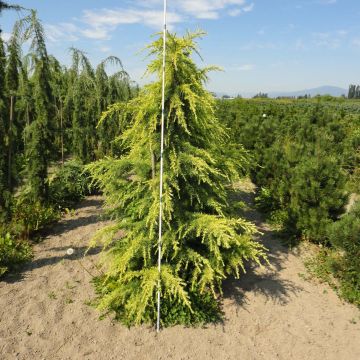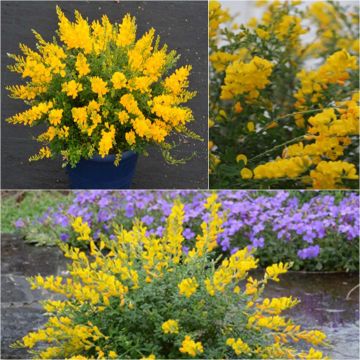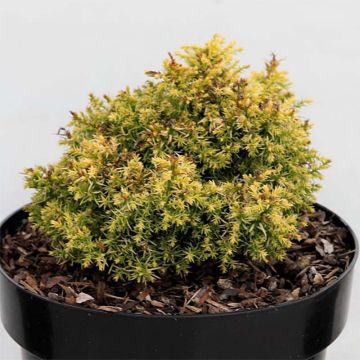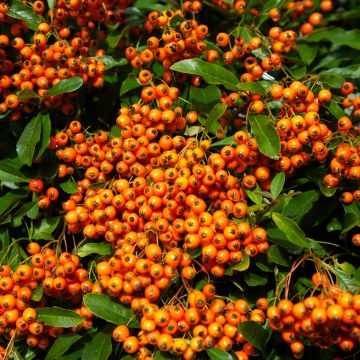Shipping country and language
Your country of residence may be:
Your country of residence is:
For a better user experience on our website, you can select:
Your shipping country:
-
Andorra
-
Austria
-
Belgium
-
Bulgaria
-
Canada
-
Chile
-
Croatia
-
Cyprus
-
Czechia
-
Denmark
-
Estonia
-
Finland
-
France
-
Germany
-
Greece
-
Hungary
-
Iceland
-
Ireland
-
Italy
-
Latvia
-
Lithuania
-
Luxembourg
-
Malta
-
Monaco
-
Netherlands
-
Poland
-
Portugal
-
Romania
-
Slovakia
-
Slovenia
-
Spain
-
Sweden
-
Switzerland
-
United Kingdom
We only deliver seed and bulb products to your country. If you add other products to your basket, they cannot be shipped.
Language:
-
French
-
German
-
Spanish
-
English
-
Italian
My Account
Hello
My wish lists
Log in / Register
Existing customer?
New customer?
Create an account to track your orders, access our customer service and, if you wish, make the most of our upcoming offers.
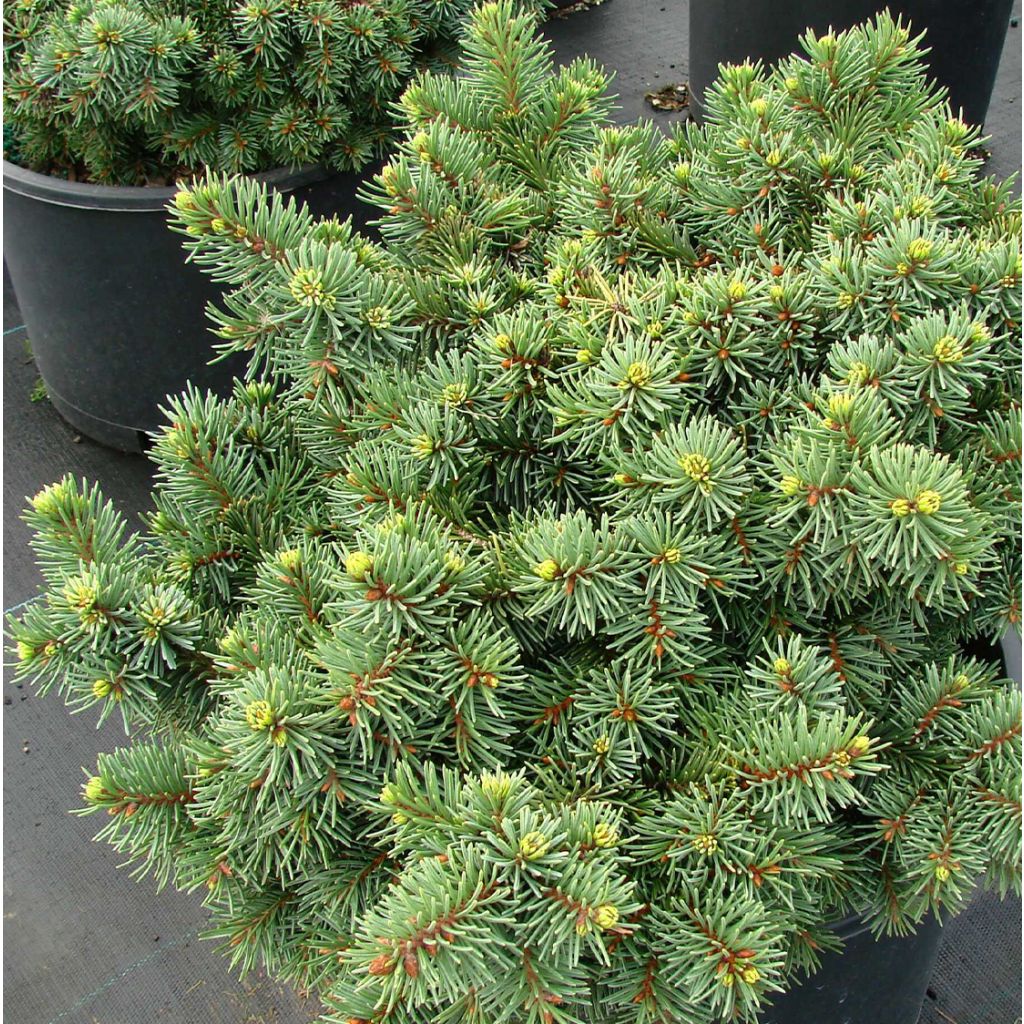

Picea pungens Mrs Cesarini - Blue Spruce
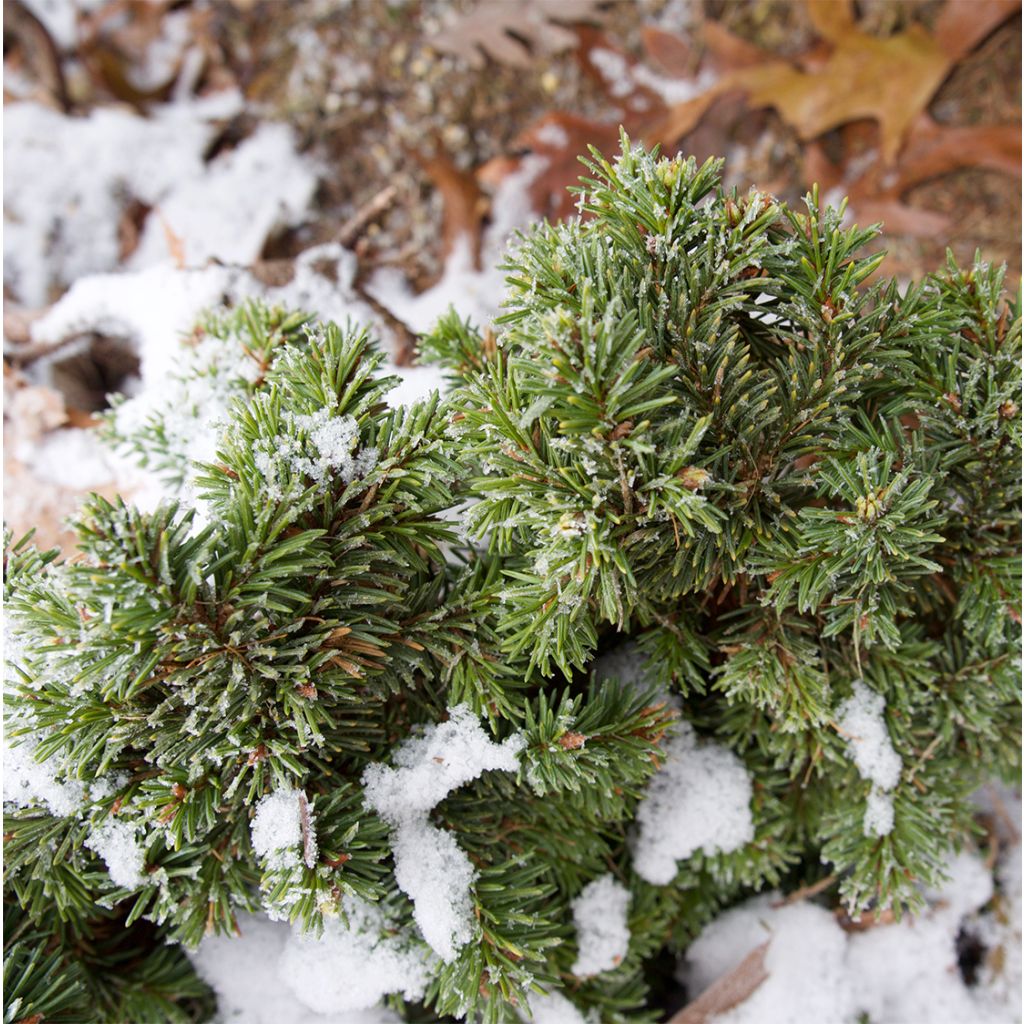

Picea pungens Mrs Cesarini - Blue Spruce
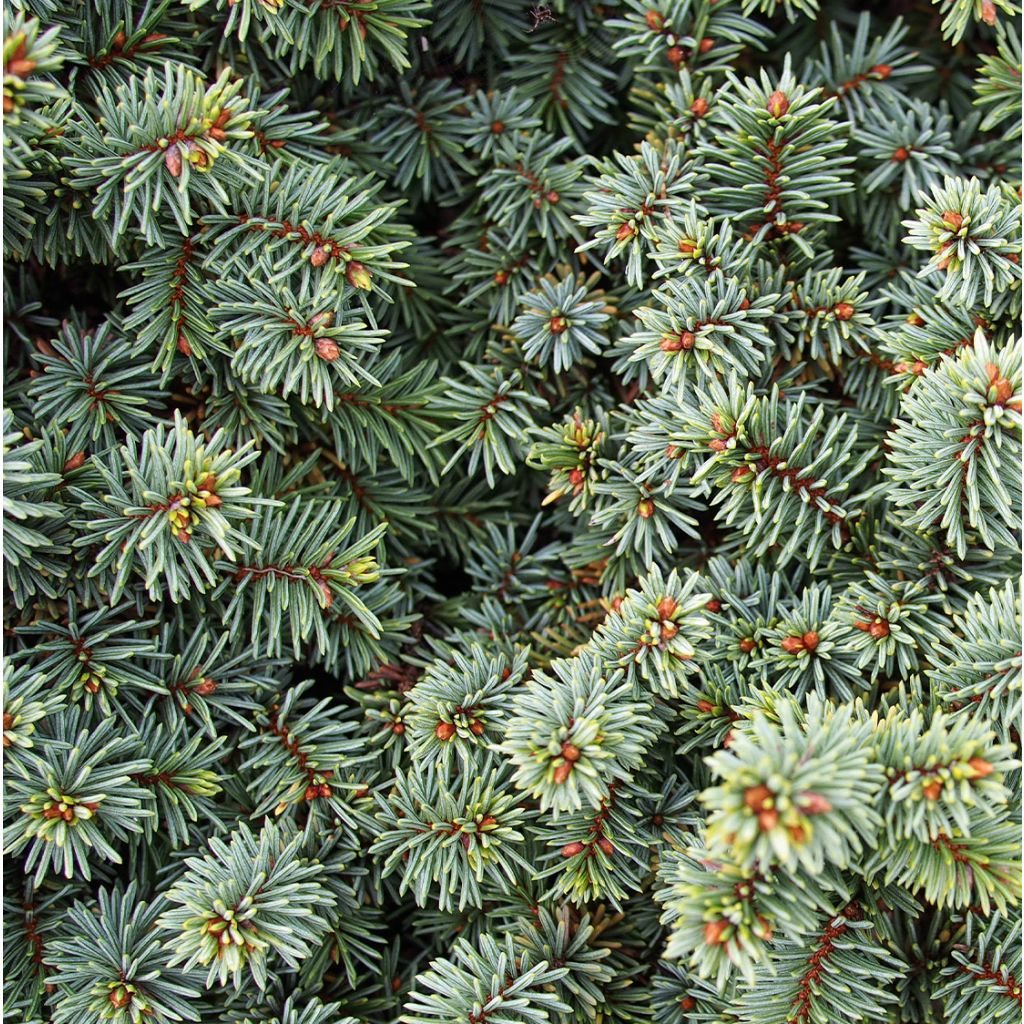

Picea pungens Mrs Cesarini - Blue Spruce
Picea pungens Mrs Cesarini - Blue Spruce
Picea pungens Mrs Cesarini
Blue Spruce, Colorado Blue Spruce, Colorado Spruce, Silver Spruce
Why not try an alternative variety in stock?
View all →Order in the next for dispatch today!
Dispatch by letter from €3.90.
Delivery charge from €5.90 Oversize package delivery charge from €6.90.
More information
This item is not available in your country.
Schedule delivery date,
and select date in basket
This plant carries a 24 months recovery warranty
More information
We guarantee the quality of our plants for a full growing cycle, and will replace at our expense any plant that fails to recover under normal climatic and planting conditions.
From €5.90 for pickup delivery and €6.90 for home delivery
Express home delivery from €8.90.
Does this plant fit my garden?
Set up your Plantfit profile →
Description
Picea pungens 'Mrs Cesarini' is a dwarf form of the Colorado blue spruce that is extremely attractive. It develops into a flat and wide dome, adorned with densely arranged soft green-blue needles, and adorned in early spring with decorative, orange young shoots. Its very slow growth and small size, with no maintenance required, make it suitable for planting in rock gardens, as well as in flowerbeds or even in pots on the terrace. It thrives anywhere, as long as it is in the sun, in well-drained soil, even occasionally dry or limestone.
Native to the west coast of the United States and the Rocky Mountains of North America, up to Canada, the Picea pungens, also known as the Colorado blue spruce or blue spruce, is a hardy evergreen conifer belonging to the pinaceae family. In its natural environment, it grows slowly, presenting an elegant and very regular conical habit, with horizontally layered branches. This tree, which can reach a height of 25 to 40 m (82 to 131 ft 2 in), tolerates limestone soils and some drought.
The 'Mrs Cesarini' variety is derived from a witch's broom found in the late 1970s by Joe Cesarini in New York. It is a charming small conifer with a very dense and initially globose habit, which then spreads to form a sort of large cushion. Its growth is very slow, so that at 10 years old, it reaches about 30 cm (11.8 in) in height, and 75 cm (0 and 29.5 in) in width. After many years, it measures about 50 cm (19.7 in) in height and 1.20 m (3 ft 11 in) in width. This variety produces short and thick branches covered with very short and sharp needles, densely and radially arranged around the branches. Its young spring shoots contrast nicely with the mature foliage. The rest of the year, its colour is a watery green. Its scaly grey-purple bark is quite decorative.
The 'Mrs Cesarini' blue spruce, with its beautifully coloured foliage, compact growth, low maintenance, and ease of cultivation, is a perfect plant for rock gardens, terraces, or large ground cover planting. It thrives in many situations, in various climates, as long as the soil is well-drained and the exposure is sunny. This plant goes well with stone walls, geometric lines of pools, and masonry works. It can be combined with spring or summer annuals, which will enhance its foliage. The architectural qualities of conifers naturally impose themselves in the design of a contemporary garden. These plants provide lasting structure to a flowerbed, mark pathways, and border the terrace. They go well with heathers or shrubby salvias, as well as ground cover plants such as aubrietas and cerastiums, and flowering shrubs like gauras. The key is to play with volumes and colours.
Report an error about the product description
Picea pungens Mrs Cesarini - Blue Spruce in pictures
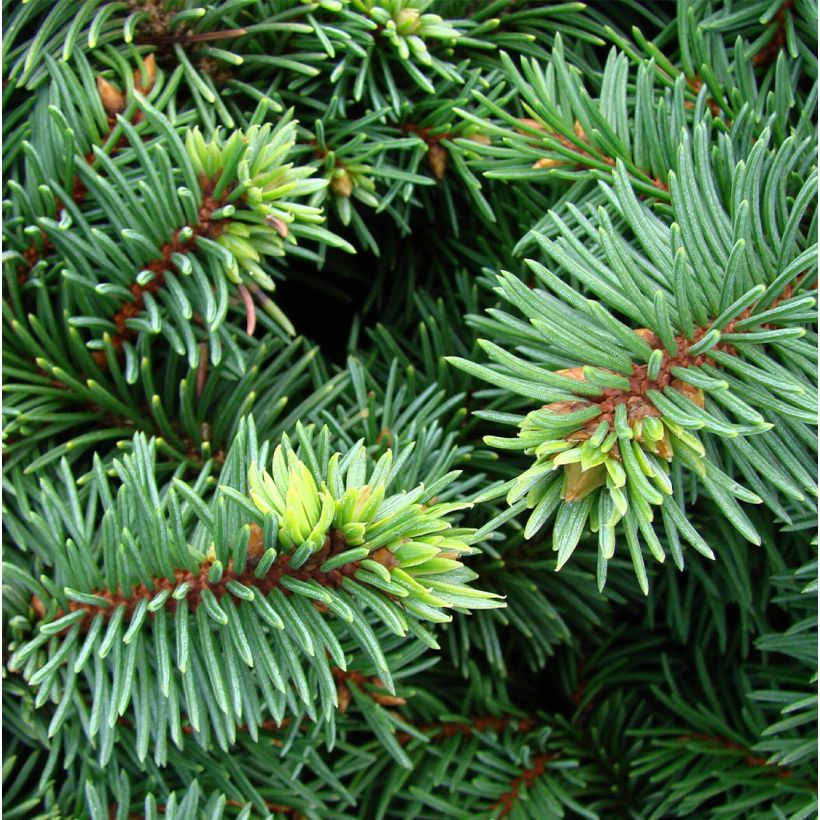

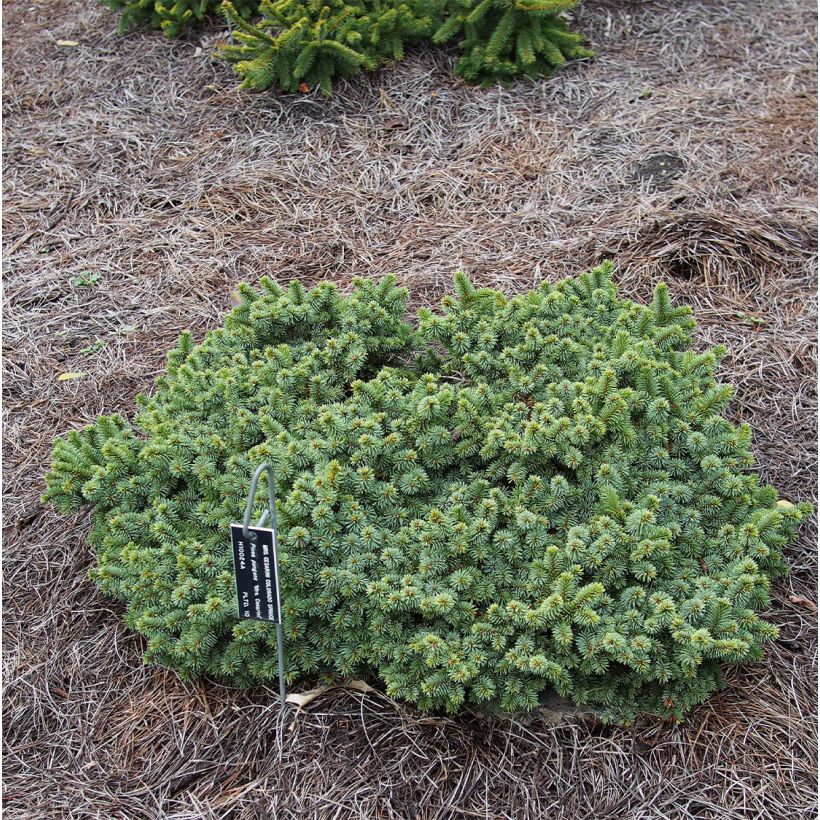

Plant habit
Foliage
Botanical data
Picea
pungens
Mrs Cesarini
Pinaceae
Blue Spruce, Colorado Blue Spruce, Colorado Spruce, Silver Spruce
Cultivar or hybrid
Other Picea
Planting and care
Picea pungens 'Mrs Cesarini' is best planted from September to November and from February to June in fertile, well-drained, light, neutral to slightly alkaline, or slightly acidic soil, even quite dry in summer. Sandy, loamy, humus-rich, or rocky soil will be perfectly suitable. Choose a sunny (or at worst partially shaded) location, sheltered from prevailing winds. In overly wet conditions, it will be more susceptible to root rot. Soak the root ball well before planting. You can add organic fertilizer to the soil at planting and water generously in the first few years, and during prolonged drought. In poor soil, apply a special conifer fertilizer every April and weed the soil in summer. This extremely hardy conifer dislikes heavy, waterlogged soils in winter. Pruning is not necessary as this plant expresses its full potential when allowed to grow freely.
Planting period
Intended location
Care
This item has not been reviewed yet - be the first to leave a review about it.
Evergreen shrubs
Haven't found what you were looking for?
Hardiness is the lowest winter temperature a plant can endure without suffering serious damage or even dying. However, hardiness is affected by location (a sheltered area, such as a patio), protection (winter cover) and soil type (hardiness is improved by well-drained soil).

Photo Sharing Terms & Conditions
In order to encourage gardeners to interact and share their experiences, Promesse de fleurs offers various media enabling content to be uploaded onto its Site - in particular via the ‘Photo sharing’ module.
The User agrees to refrain from:
- Posting any content that is illegal, prejudicial, insulting, racist, inciteful to hatred, revisionist, contrary to public decency, that infringes on privacy or on the privacy rights of third parties, in particular the publicity rights of persons and goods, intellectual property rights, or the right to privacy.
- Submitting content on behalf of a third party;
- Impersonate the identity of a third party and/or publish any personal information about a third party;
In general, the User undertakes to refrain from any unethical behaviour.
All Content (in particular text, comments, files, images, photos, videos, creative works, etc.), which may be subject to property or intellectual property rights, image or other private rights, shall remain the property of the User, subject to the limited rights granted by the terms of the licence granted by Promesse de fleurs as stated below. Users are at liberty to publish or not to publish such Content on the Site, notably via the ‘Photo Sharing’ facility, and accept that this Content shall be made public and freely accessible, notably on the Internet.
Users further acknowledge, undertake to have ,and guarantee that they hold all necessary rights and permissions to publish such material on the Site, in particular with regard to the legislation in force pertaining to any privacy, property, intellectual property, image, or contractual rights, or rights of any other nature. By publishing such Content on the Site, Users acknowledge accepting full liability as publishers of the Content within the meaning of the law, and grant Promesse de fleurs, free of charge, an inclusive, worldwide licence for the said Content for the entire duration of its publication, including all reproduction, representation, up/downloading, displaying, performing, transmission, and storage rights.
Users also grant permission for their name to be linked to the Content and accept that this link may not always be made available.
By engaging in posting material, Users consent to their Content becoming automatically accessible on the Internet, in particular on other sites and/or blogs and/or web pages of the Promesse de fleurs site, including in particular social pages and the Promesse de fleurs catalogue.
Users may secure the removal of entrusted content free of charge by issuing a simple request via our contact form.
The flowering period indicated on our website applies to countries and regions located in USDA zone 8 (France, the United Kingdom, Ireland, the Netherlands, etc.)
It will vary according to where you live:
- In zones 9 to 10 (Italy, Spain, Greece, etc.), flowering will occur about 2 to 4 weeks earlier.
- In zones 6 to 7 (Germany, Poland, Slovenia, and lower mountainous regions), flowering will be delayed by 2 to 3 weeks.
- In zone 5 (Central Europe, Scandinavia), blooming will be delayed by 3 to 5 weeks.
In temperate climates, pruning of spring-flowering shrubs (forsythia, spireas, etc.) should be done just after flowering.
Pruning of summer-flowering shrubs (Indian Lilac, Perovskia, etc.) can be done in winter or spring.
In cold regions as well as with frost-sensitive plants, avoid pruning too early when severe frosts may still occur.
The planting period indicated on our website applies to countries and regions located in USDA zone 8 (France, United Kingdom, Ireland, Netherlands).
It will vary according to where you live:
- In Mediterranean zones (Marseille, Madrid, Milan, etc.), autumn and winter are the best planting periods.
- In continental zones (Strasbourg, Munich, Vienna, etc.), delay planting by 2 to 3 weeks in spring and bring it forward by 2 to 4 weeks in autumn.
- In mountainous regions (the Alps, Pyrenees, Carpathians, etc.), it is best to plant in late spring (May-June) or late summer (August-September).
The harvesting period indicated on our website applies to countries and regions in USDA zone 8 (France, England, Ireland, the Netherlands).
In colder areas (Scandinavia, Poland, Austria...) fruit and vegetable harvests are likely to be delayed by 3-4 weeks.
In warmer areas (Italy, Spain, Greece, etc.), harvesting will probably take place earlier, depending on weather conditions.
The sowing periods indicated on our website apply to countries and regions within USDA Zone 8 (France, UK, Ireland, Netherlands).
In colder areas (Scandinavia, Poland, Austria...), delay any outdoor sowing by 3-4 weeks, or sow under glass.
In warmer climes (Italy, Spain, Greece, etc.), bring outdoor sowing forward by a few weeks.

